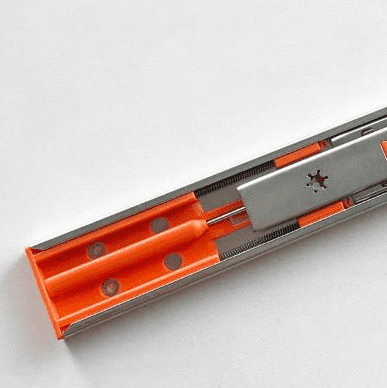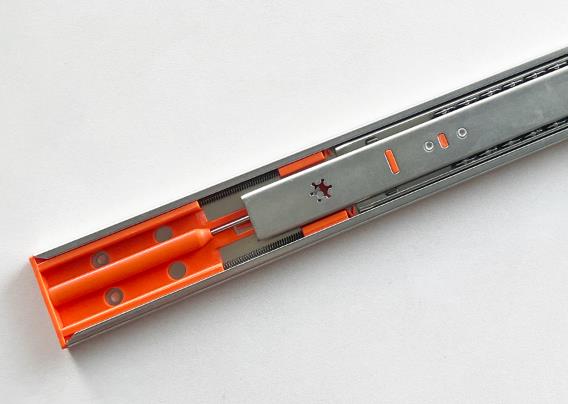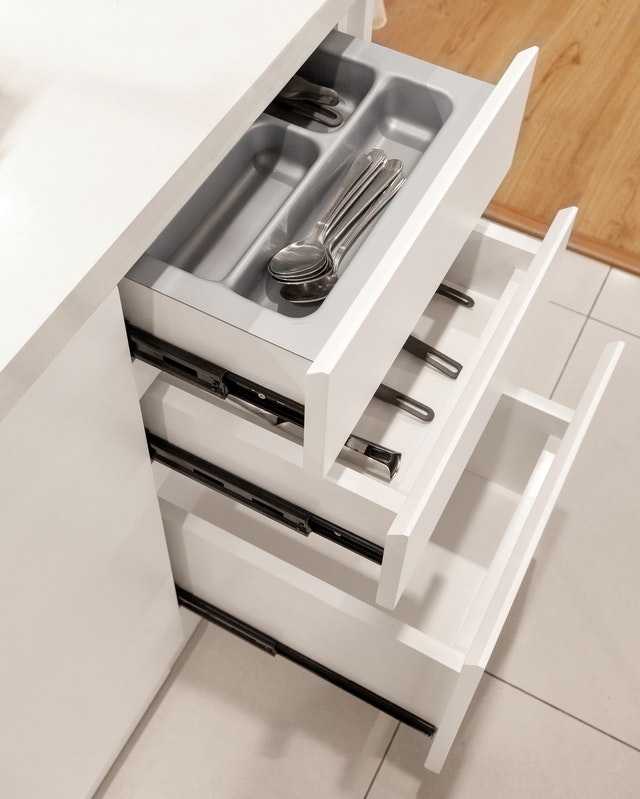When it comes to kitchen renovation, there are a lot of different things you can tweak and change. For example, you can use concealed hinges instead of displayed hinges. Or adding soft-close cabinet doors rather than the standard cabinet doors. Adding concealed handles over the open handles is also a good choice. And that’s just for cabinets! You can make your kitchen renovation as big or small as you want, from adding an island to changing the counter material or even altering the entire kitchen’s shape.
One of the more popular options that have only grown in interest over time is self-closing kitchen drawers. Today, soft close hinges are no longer unknown; you can add them to almost any cabinet as a premium feature. Some high-end cabinets may even come with soft close hinges as a native feature, depending on the stores you visit.
If you’ve considered self-closing cabinet drawers or adding self-closing drawer slides to your cabinetry, you’re in the right place. We’ll explain what these are, compare them with other similar cabinet additions, and help you decide if they’re right for your home.
What are Self Closing Drawers
Ask anyone, and they’ll tell you, you don’t have to be particularly strong to open and close a kitchen drawer. Unless you’re an infant, the muscle requirement to close a drawer isn’t all that daunting. Heck, my cat has accidentally closed a few on accident!
However, for some reason, we can never quite achieve the perfect closure when it comes to closing them. They tend to be “almost” closed, partially closed, or halfway closed, and unless intentional effort is made to close them completely, there’s a good chance they’ll remain slightly open.
Self closing drawers operate by doing exactly what the name implies. Using the slides on either side of the frame, the drawer can be closed with the simplest pushes.This not only reduces the annoyance in the process but also serves as one of those “quality of life” improvements that free up your mind to focus on other things. Unlike standard cabinets, you already know that the drawers are closed the second you touch them.
This is something that, when looked at on its face, may seem small. After just a few weeks with a self-closing cabinet drawer, you’ll genuinely forget the constant vigilance needed to ensure the drawer doesn’t stop halfway.
 How Do Self Close Drawer Slides Work?
How Do Self Close Drawer Slides Work?
Now that you grasp the concept of self-closing drawers and their operation, the question ultimately revolves around how the slides enable self-closure.
It’s actually not so complex. Self-closing drawers work by using a pair of slides and replacing the standard option with them. When installed, these slides essentially move the drawer onto its hinges before rolling it back into place.
Benefits of Self Close Drawer Slides
There are several benefits to using self close drawer slides in your furniture or cabinets. Here are some of the most notable ones:
- Prevents Damage
Self-close drawer slides prevent damage to the drawer and its contents, offering a key benefit. With traditional drawer slides, the force of the drawer closing can cause items inside to shift or break. Self close drawer slides eliminate this issue by gently closing the drawer, preventing any damage.
- Noise Reduction
Another advantage of self close drawer slides is that they reduce noise. Traditional drawer slides can be loud and disruptive, especially when drawers are slammed shut. Self-close drawer slides operate quietly, making them ideal for use in bedrooms or other quiet spaces.
- Easy to Install
Self close drawer slides are relatively easy to install, making them a popular choice for DIY enthusiasts. They come with detailed instructions and can be installed using basic tools. This makes them a convenient option for those looking to upgrade their furniture or cabinets.
Self Close vs. Soft Close Drawers
Though the two names may certainly seem similar to a degree, they certainly aren’t synonyms. While self-close works by securely and firmly closing a drawer, soft-close drawers operate by softly closing the drawer, as the name implies. So, what’s the comparison between them?
The main difference between soft-close and self-close drawers is in their closing mechanism. Soft-close drawers close gently, while self-close drawers are more forceful, making noise similar to securely closing them. Anyone in the room will be aware when you’re closing a self-close drawer.
Additionally, you may need to ensure that soft-close drawers actually close, as they can be very quiet and lack the same reliable closure method found in self-close slides.
Should You Get Them For Your Home?
This is an age-old question and really is determined by your situation. If you tend to leave drawers open accidentally or are always in a hurry, these are a great option. They close with the slightest push, and you’ll come to appreciate the sound of the drawer closing behind you as you move on to the next task.
Conversely, for those who close drawers with determination, this option might be redundant. Similarly, if you have young children at home, using these can be problematic, both due to the noise they make and the increased risk of damage from rough play, potentially causing the drawer shelf to go off track.In these instances, getting the soft-close option may be the better option.



 How Do Self Close Drawer Slides Work?
How Do Self Close Drawer Slides Work?